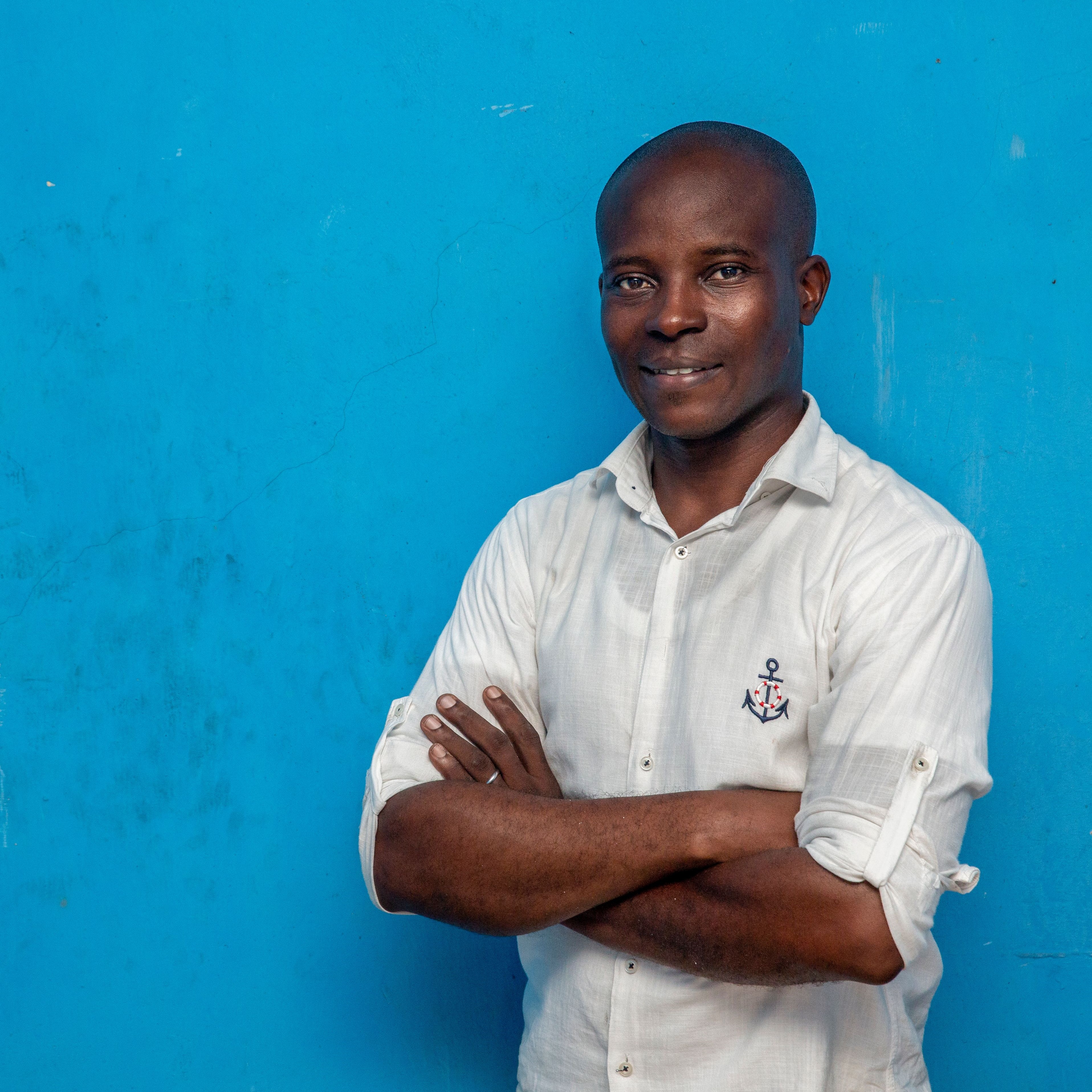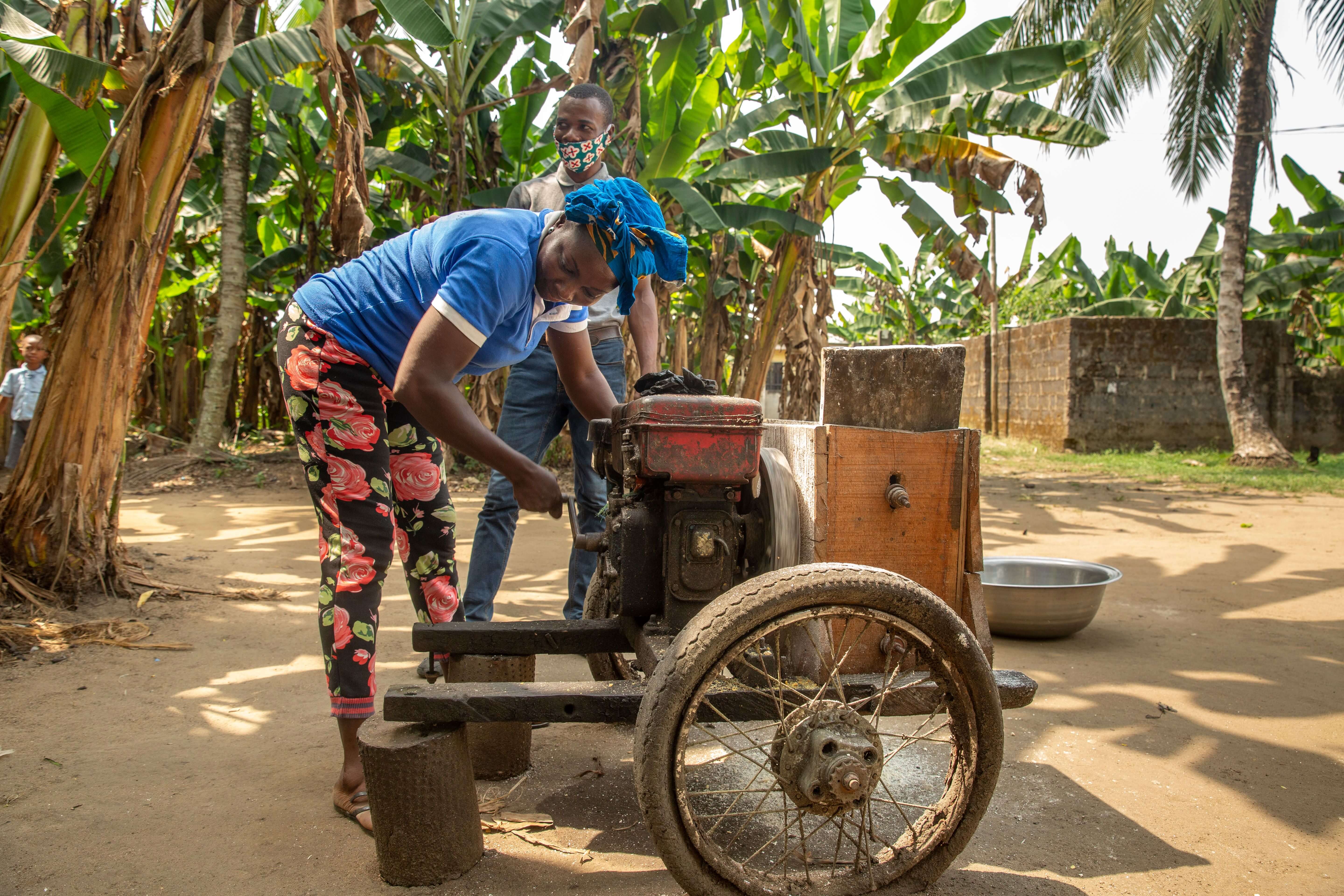The onerous process of producing garri includes peeling the cassava root, washing, grading, pressing it for starch, removing the water, sieving and frying. Aevhas sieves and fries more cassava root, faster than traditional methods. The technology offers two heating modes - charcoal and wood fire, or gas - depending on the resources of the customer. The Aevhas processing machine can also sieve and fry either simultaneously, or at separate intervals.
Processing cassava roots is laborious and time-consuming; conventional garri processing machines can take up to four hours to sieve and fry, only producing a single basin of garri. This discourages many from going into cassava farming, while most current cassava farmers remain committed to the manual processing method.
This led mechanical engineer Jacob Azundah to design Aevhas, created to sieve and fry the cassava tubes in 20 minutes, significantly reducing barriers to profitability in the sector.
A motor drives an input shaft connected to a set of sprockets and chains. The sieving unit sieves the garri using a pulveriser, breaking it down into small particles which are collected into a sieving chamber where they are separated from the chaff. A worker then engages the fryer, placing the now caked cassava into a carrier with curved blades. This carrier rotates about an axis, tossing the garri until it is ready for discharge.
Aevhas is suitable for both community-based businesses and industrial use.

“Many will be encouraged to return to farming because of the simplicity in processing garri, and as a result we can greatly reduce levels of poverty and hunger. We hope that an increase in the number of cassava farmers will bring about food security in Nigeria.”
Jacob Azundah, Aevhas


- Facebook: https://www.facebook.com/Aevhas/
- LinkedIn: https://www.linkedin.com/in/jacob-azundah-02419675/
